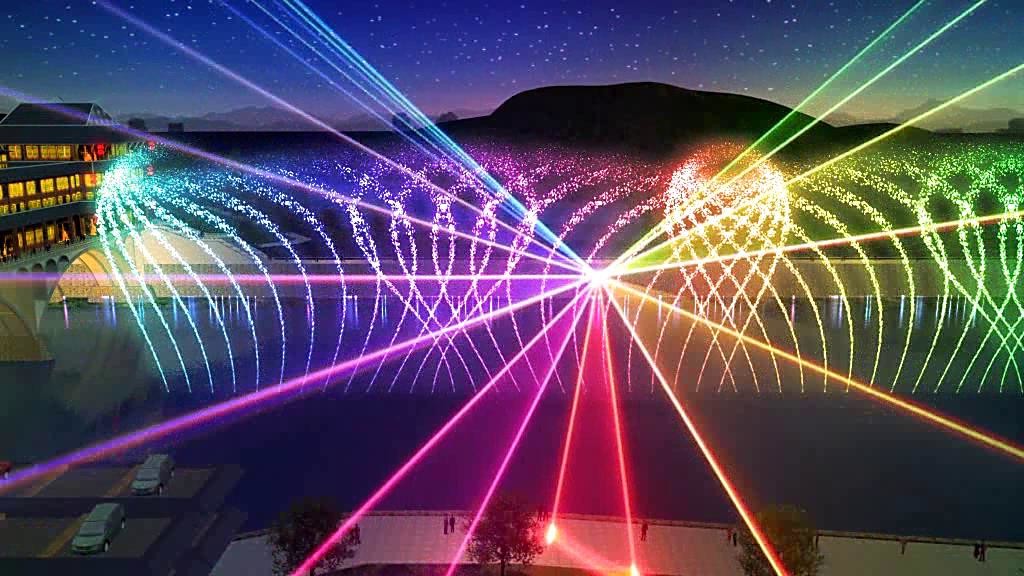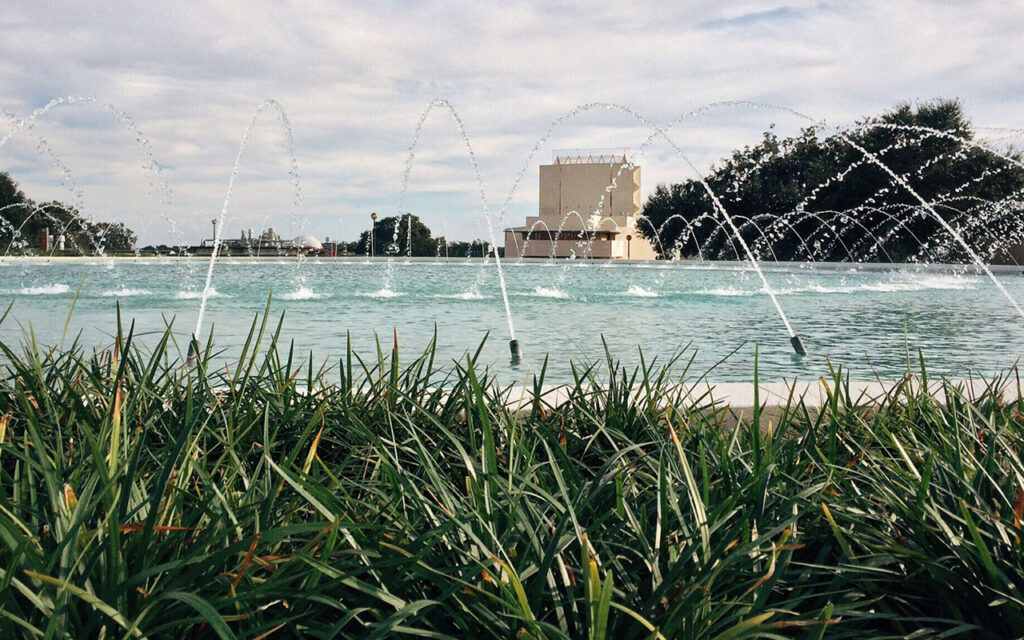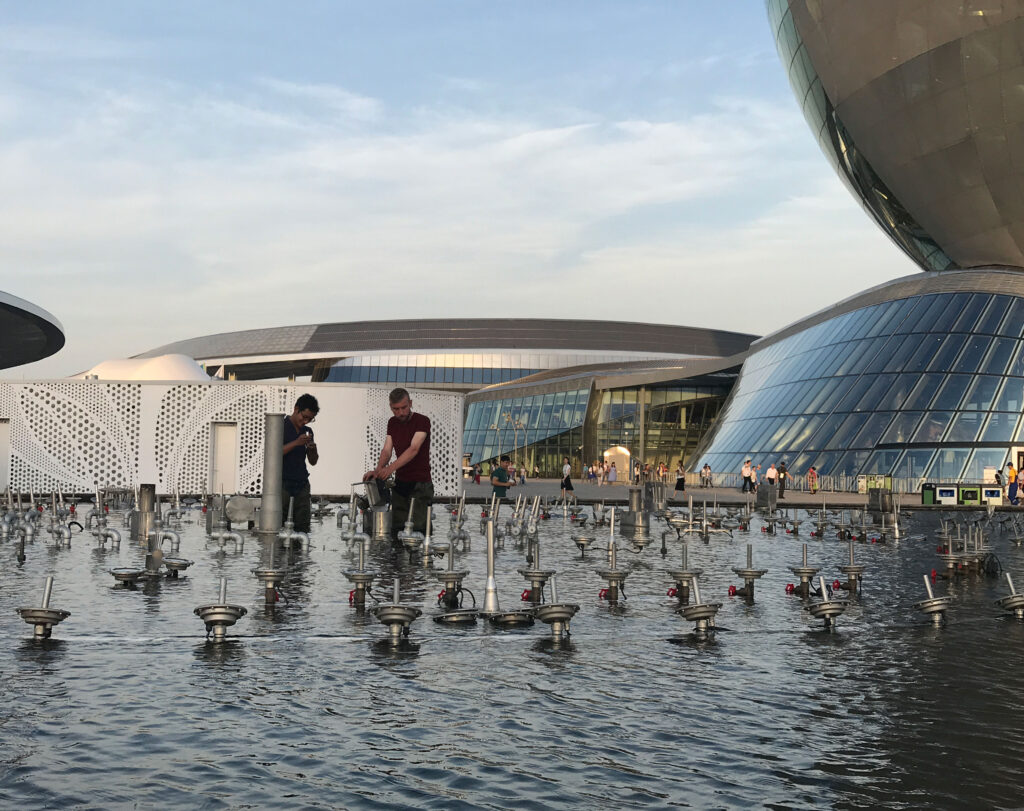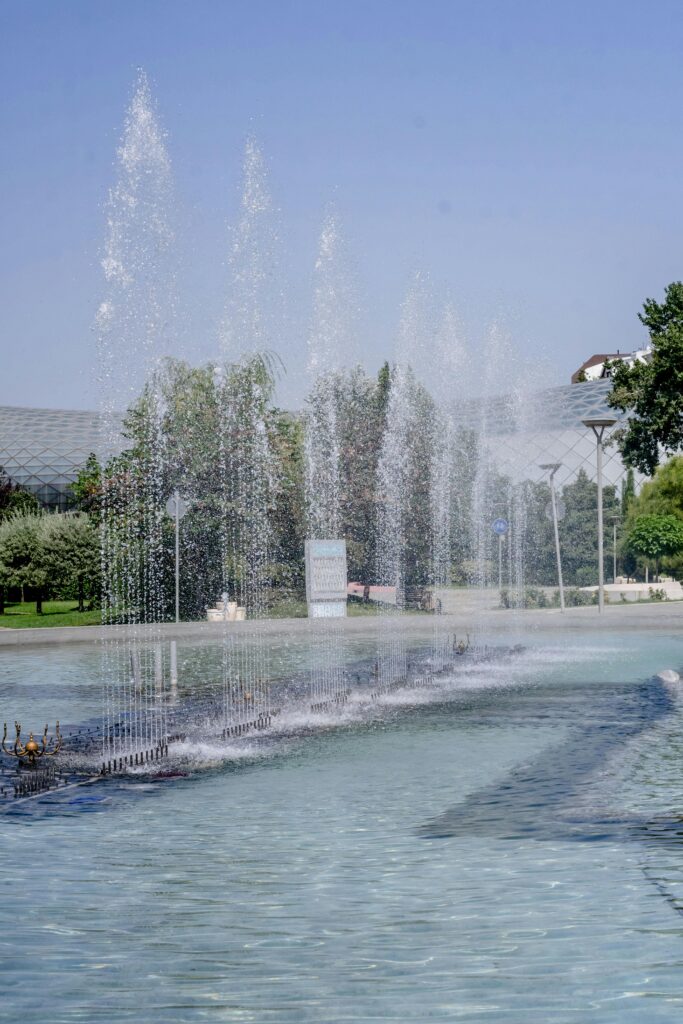FAQs

Is Himalaya music fountain manufacturer or trader?
Changsha Himalaya Music Fountain is a manufacturer specializing in music fountain equipment and products, it is one of the largest fountain manufacturers in China, having been engaged in fountain industry for over 15 years. Their range of music fountain products includes:
1. Floating Fountain: These are fountains that are designed to float on water bodies such as lakes, ponds, or pools. They create dynamic water displays with synchronized music, lights, and water patterns
Read More
2. Musical Dancing Fountain: These fountains are programmed to move and dance in synchronization with music. They combine water, lights, and music to create an entertaining and visually stunning performance.
3. Digital Water Curtain: Digital water curtains use a series of precisely controlled water jets to create a "curtain" effect. They can be programmed to display images, text, or patterns, adding a unique visual element to the fountain show.
4. Interactive Fountain: Interactive fountains allow visitors to actively engage with the water display. They often include features like motion sensors or touch panels that trigger specific water effects when activated.
5. Water Screen Movie: Water screen movie technology uses a thin, transparent film of water as a projection surface. Images, videos, or animations can be projected onto the water screen, creating a captivating visual experience.
6. Jumping Jet Fountain: Jumping jets shoot water into the air in a controlled manner, creating an impressive display of water arcs and patterns. The height and timing of the jumps can be programmed to synchronize with music.
7. Laser Show: Laser shows involve the use of laser beams to create vibrant and colorful light effects. When combined with music and water features, they enhance the overall visual impact of the fountain show.
8. Flame Fountain: Flame fountains incorporate controlled flames into the water display, adding an element of excitement and drama. The flames can be choreographed to dance along with the music and water effects.
A. FAQ OF PRODUCTS
a) Nozzles

What are types of fountain nozzles?
There are various types of fountain nozzles available, each designed to create unique water effects and shapes. Here are some common types of fountain nozzles supplied by China Himalaya Music Fountain company, which are widely used in dancing musical fountains:
1. Fan Spray Nozzle: Spray nozzles produce a fan-shaped spray of water. They can vary in size and angle, allowing for different spray patterns and coverage areas.
Read More
2. Straight Jet Nozzle: Jet nozzles produce a strong, vertical column of water. They can create a single powerful stream or multiple smaller streams, depending on the design.
3. Cascade Nozzle: Cascade nozzles produce a cascading effect by creating a series of descending water sheets or ribbons. They are often used in multi-tiered fountain designs.
4. Geyser Nozzle: Geyser nozzles create a tall, powerful eruption of water that resembles a natural geyser. The water shoots up into the air and then falls back down in a dramatic display.
5. Foam Nozzle: Foam nozzles generate a foam-like effect by injecting air into the water stream. This creates a frothy and bubbly appearance, adding texture and volume to the water display.
6. Laminar Jet Nozzle: Laminar jet nozzles create a smooth, glass-like water stream that maintains its shape without breaking into droplets. They produce a visually clean and defined water flow.
7. Mushroom Nozzle: Mushroom nozzles produce a mushroom-shaped spray of water. The water fans out horizontally and descends in a dome-like shape, resembling the top of a mushroom.
8. Bell Nozzle: Bell nozzles create a bell-shaped water effect that spreads out horizontally and descends gently. The water forms a clear, curved shape reminiscent of a bell.
9. Finger Jet Nozzle: Finger jet nozzles produce thin, vertical streams of water that resemble fingers. They can be arranged in a row or cluster to create a visually striking effect.
10. Arch Nozzle: Arch nozzles create a curved water stream that forms an arch shape. The water flows through the nozzle and gracefully arcs in the air before descending.
11. Digital Swing Nozzle: Digital swing nozzle is a device that precisely transform the digital pulse signal sent out by the control system into the installation by the specialized precision mechanism, which can make the nozzle swing, rotate at a certain angle. The movement angle and speed of digital swing nozzle can be controlled by the digital control system. Digital swing nozzle has the advantages of large output torque, digital control system, precise movement, which is mainly suitable for waterscape of music fountain.
These are just a few examples of the many types of fountain nozzles available. Each nozzle type offers its own distinct water effect, and by combining different nozzles in a fountain design, a wide variety of visually captivating displays can be created.

What’s the price of fountain nozzle?
The price of fountain nozzles can vary depending on various factors such as the type of nozzle, its size, material, complexity, and the manufacturer or supplier. Additionally, the market conditions and geographical location can also affect the price.
Welcome to inquire to Himalaya Music Fountain Factory for the price of different type of fountain nozzles, we are a fountain factory based in China, and have been focusing on fountain materials manufacturing and musical fountain installations for more than 15 years since establishment.

What fountain nozzles are commonly used in musical fountains?
In musical fountains, a variety of fountain nozzles are commonly used to create dynamic water displays that synchronize with music. Here are some fountain nozzles that are frequently utilized in musical fountain shows:
1. Adjustable Comet Nozzle:
Adjustable comet nozzle is a versatile one, the direction can be adjusted, both vertically and horizontally. In combination with height control from water-pressure and invertors, adjustable comet nozzles in groups can be made into various patterns.
Read More
2. Super High Nozzle: High Nozzle is frequently used in the central part of pools as the main nozzle, while it can also be adjusted to jet across the pool, like a rainbow.
3. Jellyfish Nozzle: Jellyfish Nozzle and Trumpet Nozzle have even water film, elegant pattern and little noise. It is usually used in indoor projects or yard pools. Both these two types can only withstand weak winds. The best outlook could be approached through adjusting the attached global valve and the nozzle lid.
4. Fan Nozzle: Fan Nozzle is good for pools both outdoors and indoors. Covering area and the Spraying angle can be adjusted.
5. 3-layer Flower-basket Nozzle: It is made up of a central nozzle and two layers of adjustable current nozzles. The actual effect will have a water column in the middle and radial water lines around. In combination with LED colored lighting, it can form magnificent flower-basket shapes.
6. Peacock Nozzle: Peacock Nozzle forms the effect of Peacock tail, with direction adjustment, it can also form a group of parabolic water lines.
7. Snow Pine Nozzle: Snow Pine Nozzle can form large water columns with air bulbs inside, which looks magnificent in the sunshine.
8. Bubble Nozzle: Bubble Nozzle makes considerable bubbling sounds, which can add to the watering atmosphere of music fountain. The effect shape is like white column.
9. Dandelion Nozzle: Dandelion Nozzle(FOG and Water film) is globe with radial branch pipes attached. The fog effect can be adjusted by the lid on each branch pipe. This Nozzle is supposed to be used only in waters without much impurities.
10. Mist Nozzle: Mist Nozzle produces tiny drops of water, which forms the effect of fog, decorating the space like a fairyland.
11. Rotating Nozzle: The reactional force from branch pipes revolves the whole nozzle while in operation. The water will be curved together, resembling a revolving dancing young girl.
12. Wind-mill Nozzle: Wind-mill Nozzle is usually installed vertically to the water-surface or at a certain angle. The water lines from branch nozzles will form the shape of a windmill. Colored light will display the most of its charm. Revolving speed could be controlled by the invertor attached to pumps.
13. Digital Swing Nozzle: Digital swing nozzle is a device that precisely transform the digital pulse signal sent out by the control system into the installation by the specialized precision mechanism, which can make the nozzle swing, rotate at a certain angle. The movement angle and speed of digital swing nozzle can be controlled by the digital control system. Digital swing nozzle has the advantages of large output torque, digital control system, precise movement, which is mainly suitable for waterscape of music fountain.
14. Laminar Flow Jet: Laminar Jets is a special fountain equipment. Water current inside is stabilized and doesn’t splash even with high pressure. The jet is stable, smooth and won’t split in its range. Another significant feature is the the colored lighted is affiliated in itself,as a result, the light can follow the whole water column to the end. In actual operation, the jet looks like a smooth crystal pole. They are frequently arranged in groups to create an arch pattern, under which people can walk without getting themselves wet.
15. Jumping Jet: Jumping jet, also named as bullet jet, can shoot pieces of water column to appointed spots. It is a fountain based on lighted jets, consequently, its water columns are also as smooth and don’t split in its range.,while it is much more interesting than lighted jets.
16. Fire Fountain Nozzle: Himalaya offer safe and spectacular fire water fountains, there are two types as following:
A. fire-ball spray nozzles
Isopar-l or Alcohol-based fuel is used, as the fuel doesn’t get lighted with fire, and it doesn’t explode in normal conditions, the fire spray is safe.
Dedicated Pressure system is used, and fire spray height can be up to 8 meters;
Carefully-calculated pressure storage and sophisticated pipe work, this can make the fire-ball have continuous performance, and reliable using life;
The device is with Standard DMX control, easy to use and program;
Himalaya Fire-balls are widely used for prestigious projects around the world like Astana Expo, Dubai Global Village and so on.
B.Fire-on-Water(Torch) Nozzles
Patented ignition design, which can make the fire to go up with water-spray, or climb up it;
With Separate VFD control for the nozzles, the fire can have sequence and height dancing;
The device is with Standard DMX control, easy to use and program;
Himalaya Torch nozzles are widely used for prestigious projects around the world like Astana Expo, Dubai Global Village and so on.

What materials are used for fountain nozzles?
Fountain nozzles are typically constructed using various materials to ensure durability, resistance to corrosion, and efficient water flow. The choice of materials depends on factors such as the type of nozzle, its intended use, and the environment in which it will be installed. Here are some common materials used for fountain nozzles:
1. Stainless Steel: Stainless steel is a popular choice for fountain nozzles due to its excellent corrosion resistance and durability. It can withstand exposure to water, chemicals, and outdoor elements.
Read More
2. Brass: Brass is another commonly used material for fountain nozzles. It is known for its strength, corrosion resistance, and ability to withstand high water pressures.
3. Bronze: Bronze is a durable and corrosion-resistant material that is often used for larger fountain nozzles. It offers excellent resistance to saltwater environments and is suitable for both indoor and outdoor applications.
4. Plastic: Certain types of fountain nozzles, especially those used in smaller or decorative fountains, may be made of high-quality plastics such as PVC (polyvinyl chloride) or ABS (acrylonitrile butadiene styrene). Plastic nozzles are lightweight, cost-effective, and resistant to corrosion.
5. Composite Materials: Some fountain nozzles may incorporate composite materials that combine the advantages of different materials. These composites can offer specific properties such as enhanced strength, lightweight construction, or increased resistance to UV radiation.
The choice of material depends on factors such as budget, specific application requirements, aesthetics, and maintenance considerations. It's important to select materials that are suitable for the intended use and can withstand the demands of water flow, environmental conditions, and regular maintenance routines.

Where can I buy fountain nozzles?
Fountain nozzles can be purchased from various sources, including specialized fountain equipment manufacturers, distributors, suppliers, and online marketplaces. If we want to buy good quality fountain nozzles at lower cost, fountain factory is a good option.
There are many companies specialize in manufacturing and supplying fountain equipment, including fountain nozzles. You can explore manufacturers such as OASE, Aquascape, Kasco, Fountain People or Himalaya Music Fountain, among others. Visit their websites or contact them directly to inquire about their product offerings and make a purchase.
Read More
Himalaya Music Fountain company is a fountain manufacturer of various fountain equipment and products including fountain nozzles, they have built hundreds of fountains in more than 30 countries, their products are passed the ISO quality management system.
When buying fountain nozzles, it's essential to consider factors such as the specific type of nozzle you need, material requirements, compatibility with your fountain system, and any additional accessories or fittings that may be necessary. Additionally, ensure that you verify the reputation and credibility of the seller before making a purchase to ensure the quality and authenticity of the products.

How to connect nozzles to a fountain?
Connecting nozzles to a fountain typically involves a few steps to ensure proper installation and water flow. Here's a general guide on how to connect nozzles to a fountain:
1. Determine Nozzle Placement: Decide on the desired locations for each nozzle in your fountain. Consider the overall design, water patterns, and choreography you want to achieve.
2. Check Fountain Plumbing: Ensure that your fountain has an appropriate plumbing system in place. This may include pipes, valves, and fittings that will deliver water to the nozzles. Ensure that the plumbing system is properly sized and can handle the water flow required for the chosen nozzles.
Read More
. Attach Nozzle Fittings: Depending on the specific design of your fountain and nozzles, you may need to attach nozzle fittings to the plumbing system. These fittings typically connect the nozzles to the water supply lines. Follow the manufacturer's instructions for attaching the fittings securely.
4. Install Nozzles: Carefully insert each nozzle into its respective fitting. The fittings should provide a secure connection for the nozzles. Make sure the nozzles are aligned properly and facing the desired direction.
5. Secure and Seal Connections: Use appropriate tools to tighten the connections between the nozzles and fittings. Ensure that the connections are snug but avoid over-tightening, which could damage the fittings or nozzles. Consider using thread sealant or plumber's tape on threaded connections to prevent leaks.
6. Test the Water Flow: Once the nozzles are connected, turn on the water supply to the fountain. Check for any leaks or issues with the connections. Adjust the water flow and pressure as needed to achieve the desired water patterns and effects.
7. Fine-tuning and Adjustments: After the initial water flow test, you may need to make minor adjustments to the nozzle positions or angles to achieve the desired water display. Experiment with different settings and observe how the water patterns respond to changes in pressure and flow.
It's important to note that the specific steps may vary depending on the design and type of fountain system you have. If you are unsure or unfamiliar with fountain installation, it is recommended to consult a professional fountain installer or seek guidance from the manufacturer or supplier of your fountain equipment.

How does a fountain nozzle work?
A fountain nozzle works by controlling the flow of water and shaping it into desired patterns or effects. Here's a general overview of how a fountain nozzle works:
1. Water Supply: The fountain nozzle is connected to a water supply source, typically through a plumbing system. The water supply delivers pressurized water to the nozzle.
2. Restriction and Pressure: Inside the nozzle, there is usually a small orifice or opening that restricts the flow of water. This restriction increases the pressure of the water as it passes through the nozzle.
Read More
3. Shape and Design: The shape and design of the nozzle determine the water pattern or effect it produces. Nozzles come in various shapes and configurations to create different water displays such as sprays, jets, cascades, or specialized effects.
4. Flow Control: The size of the nozzle orifice and the pressure of the water supply control the flow rate of water through the nozzle. Adjusting the water pressure or nozzle size can change the intensity and reach of the water display.
5. Aerodynamics and Hydraulic Forces: The design of the nozzle takes into account the principles of aerodynamics and hydraulic forces. These forces influence the trajectory, angle, and stability of the water flow, allowing for precise control and desired water patterns.
6. Choreography and Synchronization: In musical fountains or choreographed fountain shows, the nozzle operation is synchronized with music or other control systems. This synchronization ensures that the water patterns and effects align with the desired artistic vision and timing.
By combining different nozzle types, adjusting water flow rates, and synchronizing the nozzle operation, a wide range of captivating water displays can be created in fountains, including sprays, jets, arcs, cascades, and other dynamic effects.
It's important to note that the specific mechanics and operation of a fountain nozzle may vary depending on the type, design, and manufacturer. Consulting the manufacturer's instructions or seeking professional guidance is recommended for a deeper understanding of a specific fountain nozzle's functionality.
b) Lights

What voltage is a fountain light?
The voltage of a fountain light can vary depending on the specific lighting system and design. However, in general, fountain lights are available in different voltage options to accommodate various installation requirements. Here are the common voltage options for fountain lights:
1. Low Voltage (12V or 24V): Many fountain lights operate on low voltage systems, typically either 12 volts or 24 volts. Low voltage lighting systems are popular due to their energy efficiency, safety, and ease of installation. They often require the use of a transformer to step down the voltage from the main power supply.
Read More
2. Line Voltage (120V to 240V): Some larger or commercial fountain lighting systems may operate on line voltage, which is the standard household voltage. In regions with 120V electrical systems, the fountain lights may operate at 120 volts. In areas with 240V electrical systems, the lights may operate at 240 volts.
It's important to note that the specific voltage requirements for a fountain light should be determined based on the manufacturer's specifications and guidelines. Before installing or replacing fountain lights, consult the manufacturer's documentation or seek professional advice to ensure the proper voltage is used for safe and optimal performance.

What is the waterproof grade of fountain lights?
Fountain lights are designed to be used in wet environments and are typically built with a high level of waterproofing to ensure their durability and safety. The waterproof grade of fountain lights is indicated by an IP (Ingress Protection) rating. The IP rating consists of two digits, each representing a different aspect of protection.
The first digit indicates the level of protection against solid particles, such as dust and debris, while the second digit indicates the level of protection against water. For fountain lights, the second digit, which denotes water resistance, is particularly relevant. Here are some common IP ratings for fountain lights:
Read More
IP65: This rating indicates that the fountain light is protected against dust ingress and can withstand low-pressure water jets from any direction. It offers a high level of water resistance and is suitable for most outdoor fountain applications.
IP66: A fountain light with an IP66 rating is also protected against dust and can withstand powerful water jets from any direction. It provides a higher level of water resistance compared to IP65-rated lights.
IP68: This is the highest level of water resistance for fountain lights. An IP68-rated light is not only protected against dust but can also be fully submerged in water without damage. It offers the greatest level of water resistance and is suitable for underwater fountain installations.
It's important to verify the specific IP rating provided by the manufacturer for the fountain lights you are considering. Additionally, consider other factors such as the quality of the sealing mechanisms and overall construction to ensure the lights are well-suited for the intended fountain environment.
Himalaya Professional Fountain LED
Specially tailored for musical Fountains, Himalaya Professional Fountain LED can light fountain nozzles evenly with high efficiency. (the light can easily track and light water columns to 30-meter high). Equipped with 3-color chips in each Bulb and controlled by Himalaya simultaneous light control system, Himalaya Professional LED can change the color, jump, chase and fade automatically in accordance with music input. It is one of the most advanced light in this field.


